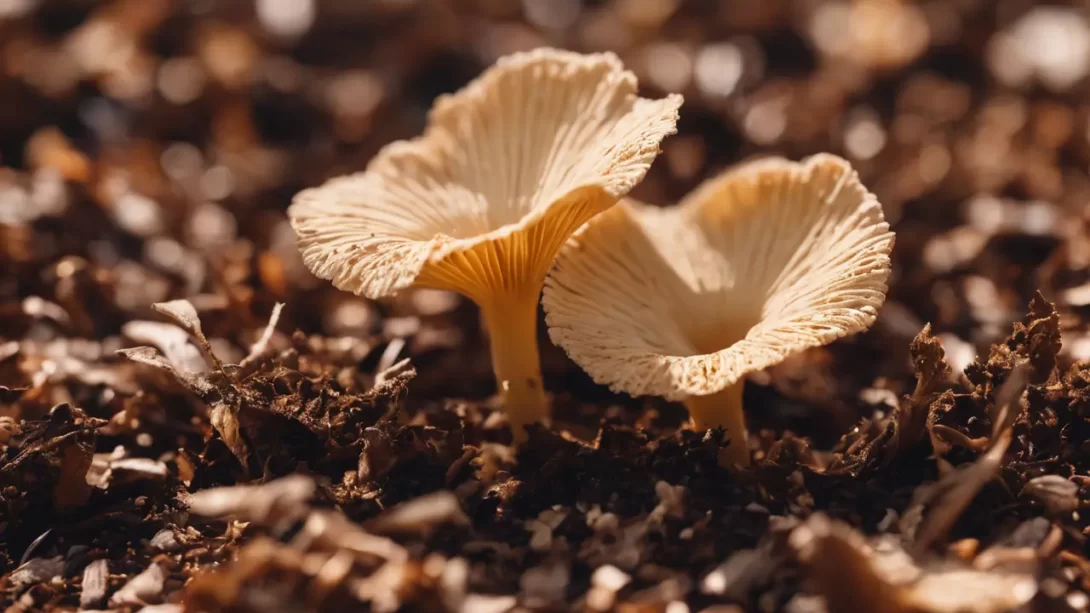Mulch is widely used in gardens for its soil-enhancing properties and aesthetic appeal. However, it can sometimes become a breeding ground for fungi, which may not only be unsightly but can also affect plant health. Understanding the types of fungi that thrive in mulch and their impact on gardens is crucial for effective management.
Identifying the Type of Fungus
Fungi in mulch can vary in type and appearance. Common varieties include slime molds, which often look like brightly colored foam; bird’s nest fungus, resembling tiny egg-filled nests; and artillery fungus, known for its tendency to shoot spores onto nearby surfaces. Identifying the fungus type is the first step in determining the appropriate treatment, as different fungi respond to different control methods.
Causes of Fungal Growth
Fungal growth in mulch is typically fueled by moist conditions, poor air circulation, and the natural breakdown of organic matter. Over-mulching can exacerbate the issue by creating a dense, damp environment ideal for fungi. Understanding these contributing factors is essential in both treating and preventing future fungal outbreaks.
Preventive Measures
Prevention is key in managing fungus on mulch. Applying mulch correctly can significantly reduce the likelihood of fungal growth. It’s important to avoid over-mulching; a layer of 2-3 inches is usually sufficient. Ensuring good air circulation around plants and mulch areas also helps keep the environment less conducive to fungi. Using well-composted, quality mulch is another effective preventive strategy, as it is less likely to harbor fungal spores compared to raw or poorly composted organic material.
Natural Remedies for Fungal Control
For gardeners preferring natural solutions, there are several home remedies effective against mild fungal growth. A vinegar solution, made by diluting one part vinegar with three parts water, can be sprayed onto the affected areas to help control fungus. Alternatively, a baking soda mixture, consisting of one tablespoon of baking soda and a half teaspoon of liquid soap mixed in a gallon of water, can be used as a fungicidal spray. It’s important to test these solutions on a small area first to ensure they don’t harm the plants.
Chemical Solutions
In cases of severe fungal infestation, chemical fungicides might be necessary. When selecting a fungicide, it’s essential to choose a product specifically designed for the type of fungus present. Always follow the manufacturer’s instructions for application and safety precautions, such as wearing protective clothing and avoiding spraying on windy days. Regular monitoring after application will help determine if additional treatments are needed.
Managing Mulch to Reduce Fungus
Proper maintenance of mulch is crucial in controlling fungus growth. Regularly turning and aerating the mulch helps to reduce excessive moisture, a primary cause of fungal development. This process also disrupts the growth cycle of fungi. Encouraging beneficial microorganisms in the mulch can also suppress fungal growth. These can be promoted by adding compost to the mulch, which introduces these helpful organisms and enhances the overall health of the garden soil.
When to Replace Mulch
There comes a point when mulch affected by fungus may need to be replaced. If the mulch is heavily infested or has become overly decomposed, it’s best to remove it. When disposing of fungus-infected mulch, avoid spreading it in other garden areas to prevent the spread of spores. Replace the old mulch with fresh, well-composted mulch, taking care to apply it in a manner that avoids previous mistakes.
Conclusion
Effectively managing fungus on mulch is a balance of prevention, timely intervention, and ongoing maintenance. By understanding the causes of fungal growth and adopting appropriate control measures, gardeners can maintain healthy, attractive mulch that enhances the garden’s beauty and vitality. Regular care and attention to mulching practices are key to a thriving garden environment.



